Indoor Cannabis Grow Tips for Healthy Plants
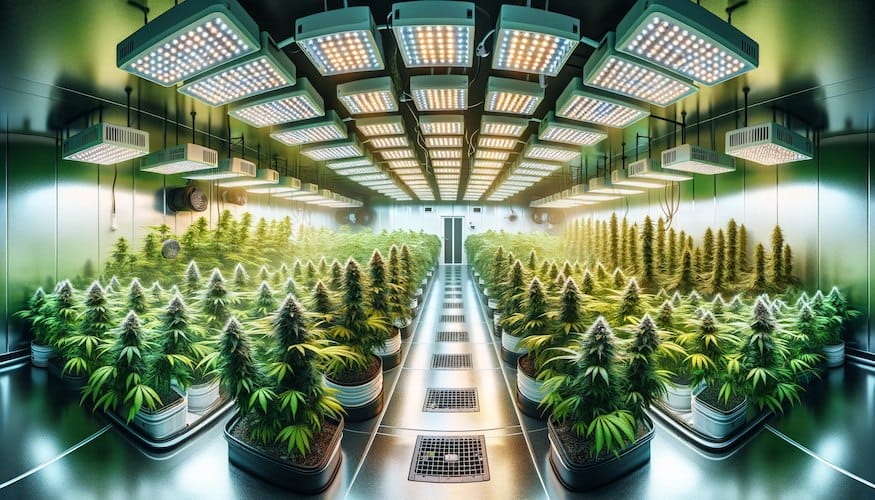
Starting an indoor cannabis garden is an adventure that blends excitement with a fair share of know-how. With the proper guidance, even first-time growers can harvest top-quality buds year-round. This in-depth indoor cannabis cultivation guide walks you through the core best practices—from choosing advanced lighting to dialing in your grow room climate—so you can learn how to grow cannabis indoors like a pro.
Whether you already have a few runs or are just outfitting your first tent, the tips below will help you maintain peak plant health and pull in canopy-filling yields. Let’s explore the green, controlled world of indoor marijuana cultivation, where precision and customization come together to create ideal growing conditions.
Key Takeaways
- Master proven strategies that keep indoor plants vigorous and resilient.
- See why matching grow-light spectra to each phase of growth pays off.
- Employ space-saving methods such as SOG and ScrOG for bigger harvests.
- Fine-tune watering schedules to avoid the twin pitfalls of under- and over-watering.
- Dial in soil and nutrient regimens, power every plant life cycle stage.
- Time the switch from veg to flower for maximum bud production.
Selecting the Right Indoor Grow Lights
The first cornerstone of indoor success is light. Recent gains in LED tech have ushered in a new era of efficient, cool-running fixtures that deliver stellar results while trimming your power bill.
The Evolution of LED Technology for Cannabis Cultivation
Older HID and fluorescent setups paved the way, but modern LED grow lights dominate thanks to low heat output, custom spectra, and long service life.
Comparing LED Models — Saving Energy and Increasing Yields
Top manufacturers such as Horticulture Lighting Group (HLG) raised the bar with fixtures like the Quantum Board line, celebrated for boosting potency and THC levels while sipping electricity.
Understanding the Importance of Light Spectrum in Plant Growth
Plant chemistry responds to specific wavelengths. Full-spectrum LEDs from brands like Green Sunshine Company and HLG shepherd your crop from veg through flower, empowering each phase of the cannabis life cycle.
| Feature | Traditional Grow Lights | Modern LED Grow Lights |
|---|---|---|
| Energy Efficiency | Higher consumption, lower efficiency | Lower consumption, higher efficiency |
| Heat Emission | High temperatures often demand extra cooling | Low, usually no supplemental cooling |
| Light Spectrum | Limited or fixed | Full spectrum, tunable for all stages |
| Lifespan | Shorter, frequent bulb swaps | Very long, minimal maintenance |
| Impact on Yield | Inconsistent | Consistently higher yield and potency |
Strategies for Creating Optimal Indoor Grow Spaces
Crafting an efficient grow room is like staging a high-end production—every square inch must work in your favor.
Maximizing the Use of Space with SOG and ScrOG Techniques
The Sea of Green (SOG) packs many small plants close together for rapid harvests, while the Screen of Green (ScrOG) spreads branches across a horizontal screen, exposing more bud sites to light and airflow. Early topping and airflow training help build a flat, uniform canopy for LED penetration.
Environmental Control: Temperature, Humidity, and Exposure
Keep daytime temps around 70–85 °F, nighttime 58–70 °F, and humidity 40–60 %. Stable conditions and balanced light intensity are the recipe for consistent harvest weight.
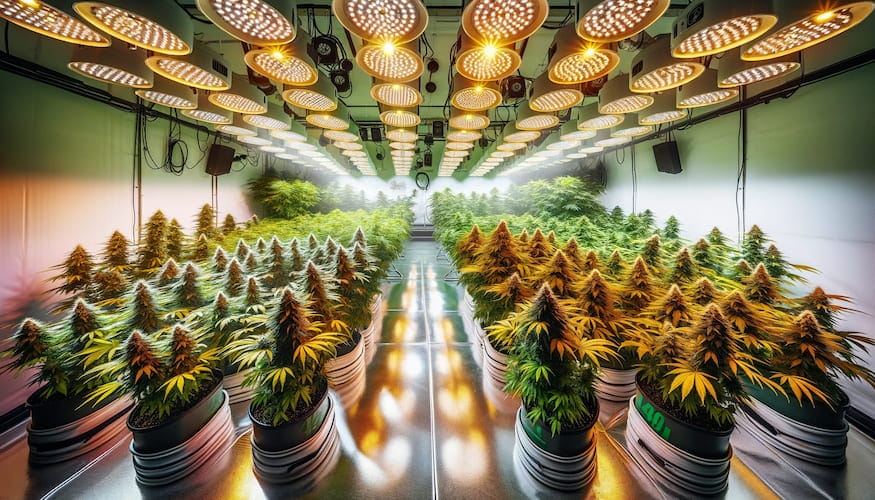
Indoor Cannabis Growing Tips for Efficient Watering Practices
Watering looks simple—until it isn’t. Striking the right balance between dry roots and soggy soil is vital.
Under-hydrated plants droop and yellow; over-watered plants sag and may suffer root rot. Use these tactics to stay in the sweet spot:
- Feel the Weight: Lift pots after watering and again when dry; the difference is your cue.
- Deploy Moisture Meters: Probe below the surface to see what the roots feel like.
- Watch the Leaves: Leaves tell tales—stay alert for early stress signs.
Nail this rhythm and your plants will pay you back with dense, top-shelf buds.
Nutrition and Soil Management for Vigorous Plant Health
Healthy soil teeming with life sets the stage for explosive growth. Here’s how to keep your medium rich and balanced.
The Advantages of Organic Fertilizers and Amendments
Organic fertilizers—think worm castings, bat guano, bone meal—deliver nutrients slowly, boost soil biology, and heighten terpene expression.
Balancing Nutrient Levels for Peak Performance
Monitor your N-P-K ratios carefully. Too much—or too little—of any primary nutrient handicaps growth. A structured feeding schedule guided by regular runoff tests keeps levels dialed in. For a reference, see the full rundown of essential nutrients.
The Art of Training and Pruning for Better Yields
Training and pruning channel the plant’s energy into prime bud sites, creating bushier canopies and heavier colas.
Implementing Low-Stress Training (LST) and Topping Techniques
- LST: Gently bend and tie branches for an even canopy and deeper light penetration.
- Topping: Remove the main leading shoot once the plant has 4–6 nodes to promote multiple colas.
Pruning and Defoliation: Timing and Techniques for Success
| Technique | When to Apply | Main Benefit |
|---|---|---|
| Pruning | Early veg | Focuses growth on top sites |
| Topping | Early veg (4–6 nodes) | Creates a bushier footprint |
| Defoliation | Before the flower, sparingly mid-flower | Boosts airflow and light penetrating the Vegetative to Flowering Transition |
When you flip to flower, it can make or break your yield.
Understanding Photoperiods and How They Affect Flowering
Indoor growers mimic shortening autumn days by switching to a 12/12 cycle—12 hours light, 12 hours dark—to trigger bloom.
Calculating the Ideal Time to Initiate the 12/12 Light Cycle
Flip when plants hit roughly half your intended final height; they’ll stretch during early flower, then settle into bud production.
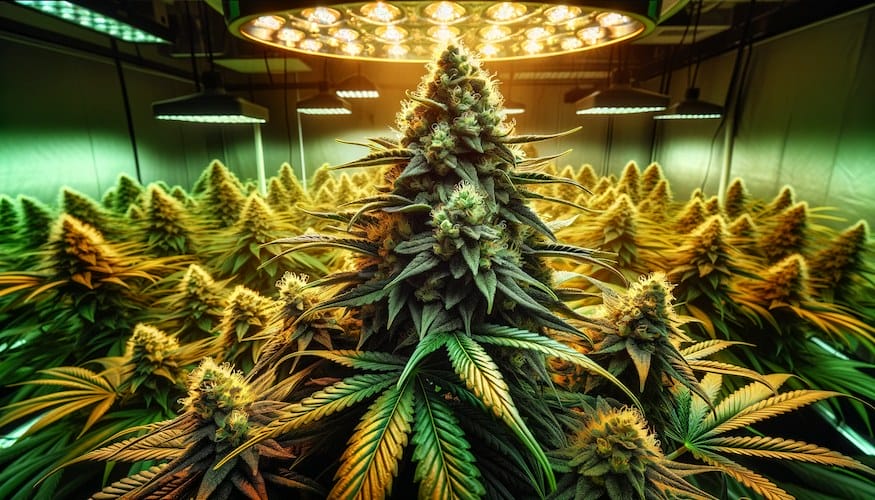
Utilizing Effective Pest Management in Indoor Cultivation
No matter how spotless your room is, pests can sneak in. Robust indoor pest management hinges on prevention, early detection, and gentle but effective treatment.
| Common Indoor Cannabis Pests | Preventive Steps | Go-To Treatments |
|---|---|---|
| Spider Mites | Keep RH low, filter intake air | Neem oil, insecticidal soap, and predatory mites |
| Fungus Gnats | Avoid over-watering, use sticky traps | Bti, beneficial nematodes |
| Aphids | Quarantine new clones, maintain cleanliness | Essential-oil sprays, ladybugs |
| Whiteflies | Reflective mulch, yellow sticky cards | Insecticidal soap, horticultural oils |
| Thrips | Seal cracks, preventive sprays | Spinosad, pirate bugs |
- Inspect weekly for early pest signs.
- Clean floors, walls, tools, and intake vents regularly.
- Introduce beneficial insects where appropriate.
- Reserve harsher controls for severe outbreaks.
Maintaining Odor Control in Indoor Cannabis Grows
Those signature terpenes can quickly escape your grow room and announce themselves to the neighborhood. A bright odor-control plan keeps your operation discreet and compliant.
The Importance of Carbon Filtration Systems
Activated-carbon filters scrub terpenes from exhaust air before it exits the room, leaving virtually no detectable smell.
Techniques for Minimizing Aroma Leakage Outside the Grow Area
| Odor Control Method | Pros | Watch-outs |
|---|---|---|
| Carbon Filtration | Highly reliable, safe | Replace carbon periodically |
| Sealed Grow Room | Locks odor inside, stabilizes the climate | Needs an airtight construction |
| Directed Airflow (negative pressure Airflow) | ents unfiltered leaks | Requires a well-sized exhaust fan |
Conclusion
Indoor cannabis cultivation is equal parts science and artistry. Choosing efficient LEDs, optimizing space with SOG or ScrOG, perfecting watering and nutrition, and mastering training will pave the way for bumper harvests. Timely photoperiod changes, vigilant IPM, and solid odor control are the formula for consistent success.
Ready to put these insights to work? Stock up on elite genetics from our curated lineup of affordable cannabis seeds, exclusively at Seeds Here Now, and set your indoor grow in motion.
FAQ
What are the best LED grow lights for indoor cannabis cultivation?
The most reliable fixtures are purpose-built for horticulture and cover the full spectrum. Trusted brands like the Green Sunshine Company and HLG (e.g., the HLG series) deliver outstanding results while keeping energy use in check.
How do I optimize my indoor cannabis growing space?
Apply SOG or ScrOG techniques, control temperature and RH, and line walls with reflective material. Uniform light distribution and steady climate are the twin pillars of optimized space.
What watering practices should I follow for growing cannabis indoors?
Allow the medium to dry slightly between waterings, use moisture meters, and learn the weight cue of each pot. Consistent but not excessive watering prevents root issues.
What are the benefits of using organic fertilizers for indoor cannabis cultivation?
Organic inputs enrich soil biology, release nutrients gradually, and often enhance terpene complexity for smoother, more flavorful buds.
How can training and pruning improve my indoor cannabis yields?
LST, topping, and selective defoliation expose more bud sites to light and focus the plant’s resources on prime flowers, boosting quality and quantity.
When should I transition my cannabis plants from the vegetative stage to the flowering stage?
Flip to 12/12 when plants reach about half of your target final height; this accounts for the post-flip stretch while preventing overcrowding.
How do I manage pests in my indoor cannabis grow?
Maintain strict cleanliness, inspect plants weekly, and use an IPM approach that starts with natural predators or gentle organics before escalating to more potent remedies.
What are some practical ways to control odors in my indoor cannabis setup?
Install a high-quality carbon filter on your exhaust line, seal the grow space to maintain negative pressure, and consider supplemental odor-neutralizing gels if needed.
“`
Suggested Articles
;)
;)
;)




 04 Nov 2025
04 Nov 2025  7 min read
7 min read
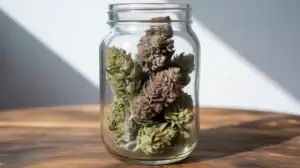
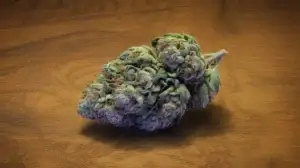
 January 18, 2024
January 18, 2024 


RESPONSES (0)
No responses yet. Be the first to respond!